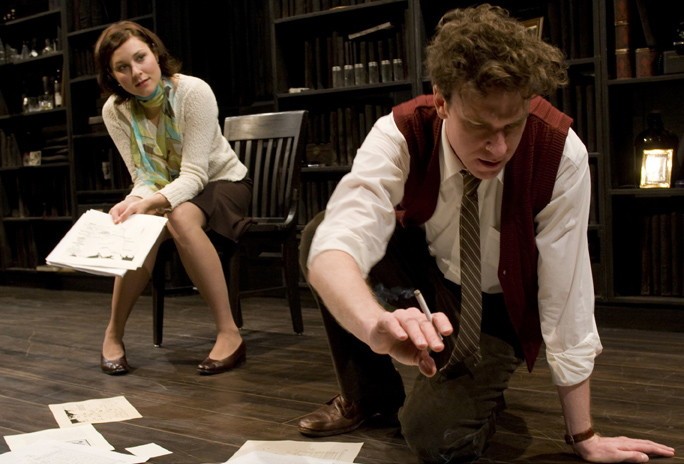Heartbreaking and captivating
Hannah Moscovitch’s controversial play is raw emotion at its most empathetic
A dramatic tale about disappointment and deception, Hannah Moscovitch’s East of Berlin has you hanging onto the edge of your seat the whole way through.
The story opens at the ending: Rudi (Brendan Gall), the son of a war criminal, has returned home after leaving years earlier because of his disgust with his father’s history as a German Nazi. Rudi tells his story, about life growing up in Paraguay after his parents lost the war and about life after fleeing from his family to Germany.
Gall portrays the conflicting anxieties in his character with faithful precision.
Paul Dunn plays Hermann, Rudi’s school friend in Paraguay. He conspires with Rudi to push back against their fathers. It is Dunn who is given the most comedic lines in the first part of the play, but it isn’t until later on in the performance that the delivery of his lines matches his words during his more humorous moments.
Rudi’s love interest in Germany, Sarah, is played by Diana Donnelly.
The chemistry between Sarah and Rudi is heartbreaking as the audience sees that so much of their affection stems from their mutual curiosity and defiance of the past.
All three actors share vibrant energy, working together to bring the story to life.
Moscovitch combines raw emotion with a great understanding of human relationships between family, lovers, friends and enemies.
East of Berlin is a controversial piece which actually elicited disapproving mutterings from some of the members of the audience at various points throughout Rudi’s story. The timing in this performance created a shock factor for the audience, drawing out startled gasps and even laughter as the play shifted from drama to both dark and light-hearted humour.
The lighting and the music intensified the movements on stage, adding to the chilling ambience. The costumes accurately reflect the time period as well.
The set itself transformed, with the change of lighting or the actors’ tones and moods, from a study to a school classroom, an apartment, a library and a concentration camp. With a backdrop of shelves that held rows upon rows of books, a door in the centre, a ladder off to the side and a single chair which was periodically integrated into each scene, the transitions between scenes was flawless.
Although there is an overarching desperation in the play’s melancholic ambiance, it is a captivating tragedy with a message that transcends time.
Published in Volume 64, Number 13 of The Uniter (November 26, 2009)







